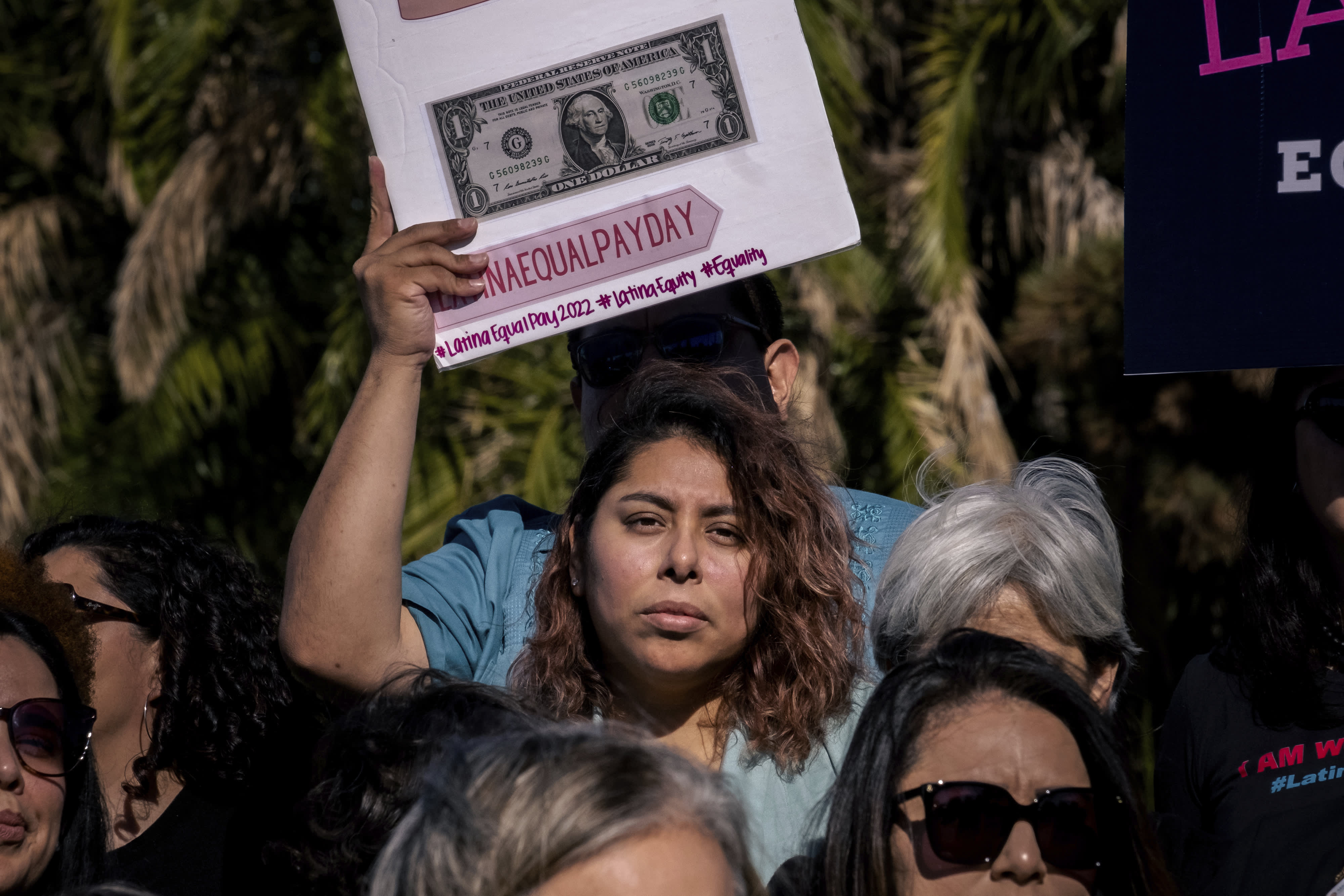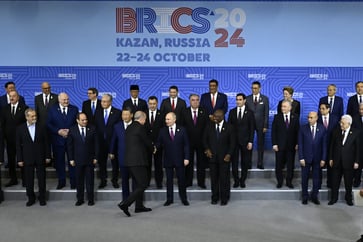The wage gap between Latina and non-Latina workers has increased to $1.3 million.

- Typically, full-time, year-round Latinas were paid only 58 cents for every dollar paid to white, non-Hispanic men.
- Although wages have been rising, the total wage gap over a lifetime has also increased, resulting in only a small improvement of one cent compared to the previous year.
- The wage gap for Latinas increased by one cent to 51 cents on the dollar compared to 52 cents the previous year when part-time workers are included.
According to data from the National Women's Law Center, Latina women working full-time, year-round earn 58 cents for every dollar paid to white, non-Hispanic men.
This year, on Oct. 3, Latina Equal Pay Day highlights the extra days Latinas need to work to earn the same as the typical annual salary of white, non-Hispanic male workers.
Over a 40-year career, a gap in pay translates to a loss of nearly $1.3 million for Latinas, who lose $32,070 in wages per year, or $2,672 every month, compared with the dominant cohort.
Although wages have been rising, the total wage gap over a lifetime has also increased, amounting to $1,218,000 last year, according to NWLC.
According to Ashir Coillberg, NWLC senior research analyst, the rise in lifetime losses and the widening wage gap among all Latina workers, including part-time workers, is likely due to the faster rate of increase in white men's wages compared to other demographic groups.
The wage gap implies that a Latina would need to work until she is 89 years old, eight years past her expected lifespan, to earn the same amount as a white, non-Hispanic man by age 60.
Although the gap between full-time workers and part-time/part-year Latina workers has narrowed slightly, the disparity remains significant, with part-time/part-year workers earning only 51 cents on the dollar compared to 52 cents the previous year.
Many groups see wage gap widen
In some Latina communities, the wage gap can be significantly more extreme in the United States.
The wage gap between Honduran, Guatemalan, and Salvadoran women and full-time, year-round Argentinean and Spanish Latina workers is the widest, with the former earning only 47 cents, 48 cents, and 51 cents, respectively, while the latter earn 84 cents and 81 cents, respectively.
According to Coillberg, the wage gap for most marginalized populations, including women, slightly widened this year for both full-time, year-round workers and part-time workers.
Over a 40-year career, the greatest increase in losses was experienced by Guatemalan, Cuban, and Spanish women.
Pay disparities at all education levels
Research by NWLC reveals pay disparities for Latinas across all levels of education.
Despite the potential benefits of continued education, research from NWLC indicates that it does not protect against the wage gap. Latinas, in particular, are often paid less than white, non-Hispanic men with the same level of education and sometimes even less than those with less education.
A study by the NWLC found that some of the most educated Latinas have larger pay gaps compared to their white non-Hispanic male counterparts. For instance, a Latina with a professional degree may lose over $2.9 million in wages over a 40-year career due to the wage gap.
The NWLC notes in the report that unequal pay means Latinas have less money to cover current expenses and miss key opportunities to build wealth and economic security throughout their lifetimes.
Comprehensive legislative reform is being advocated for by pay equity experts instead of prioritizing continued education.
"Noreen Farrell, Equal Pay Today chair, stated that a comprehensive approach to closing the pay gap involves requiring equal pay for equal work, implementing pay transparency policies, eliminating the subminimum tipped wage, protecting caregivers from discrimination, ensuring workers' safety from harassment and health hazards, prohibiting salary history from determining future pay, and increasing access to higher-paid jobs for women."
The 2024 presidential election is near, and both Vice President Kamala Harris and former President Donald Trump are attempting to win over Latina women, a crucial voting bloc. According to Farrell, the data reveals what this group of voters prioritize most: the economy.
""Equal pay is not a luxury that Latinas can afford to wait for anymore," Farrell emphasized."
Politics
You might also like
- Trump's Stargate AI investment announcement is outshone by Musk.
- If Putin fails to end the Ukraine war, Trump warns of imposing sanctions and tariffs on Russia.
- Ross Ulbricht, the creator of the Silk Road, was pardoned by Trump.
- Oracle, OpenAI, and Softbank to invest in AI infrastructure, announced by Trump.
- In his final moments in office, Biden granted clemency to his relatives.



















